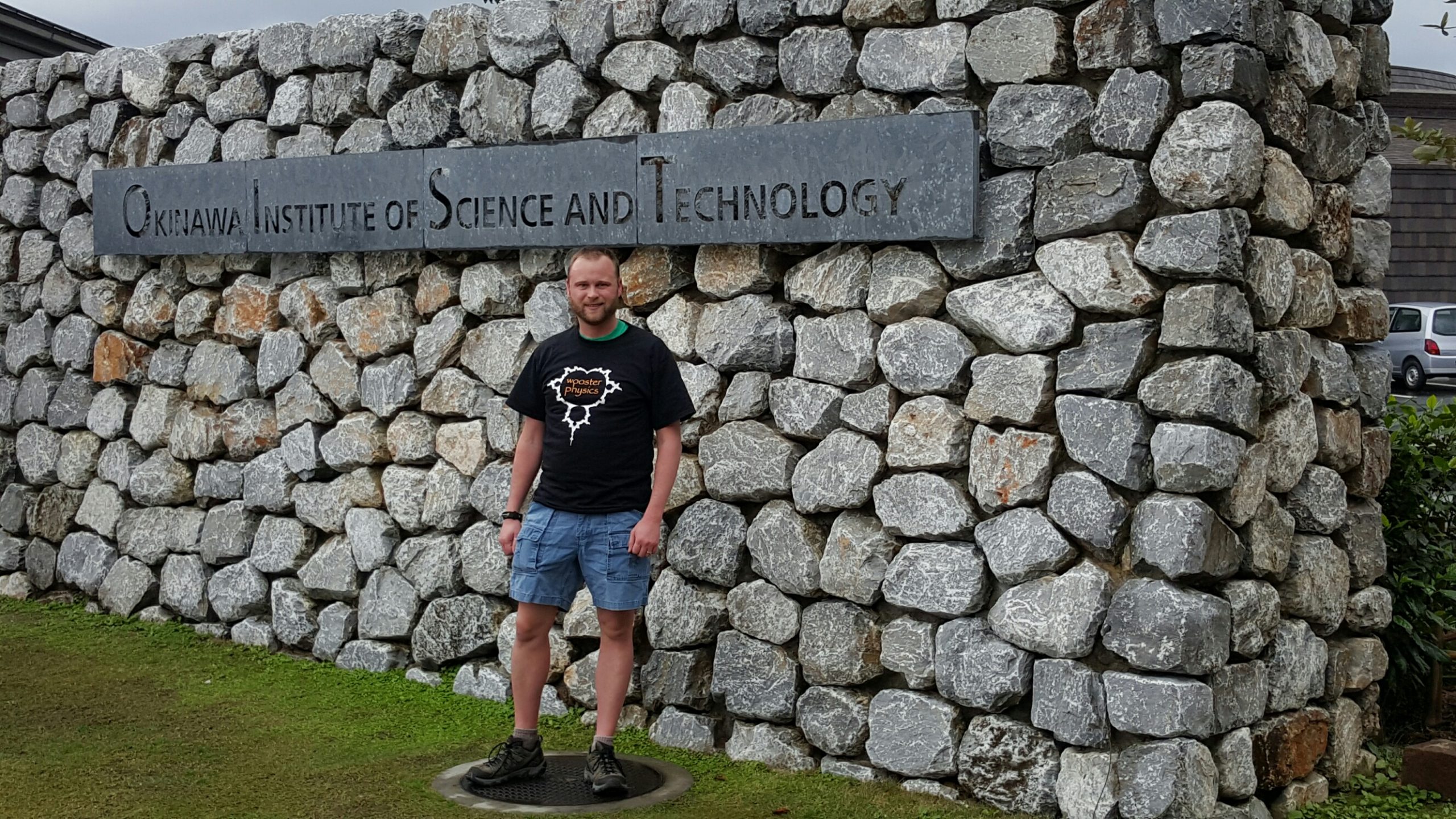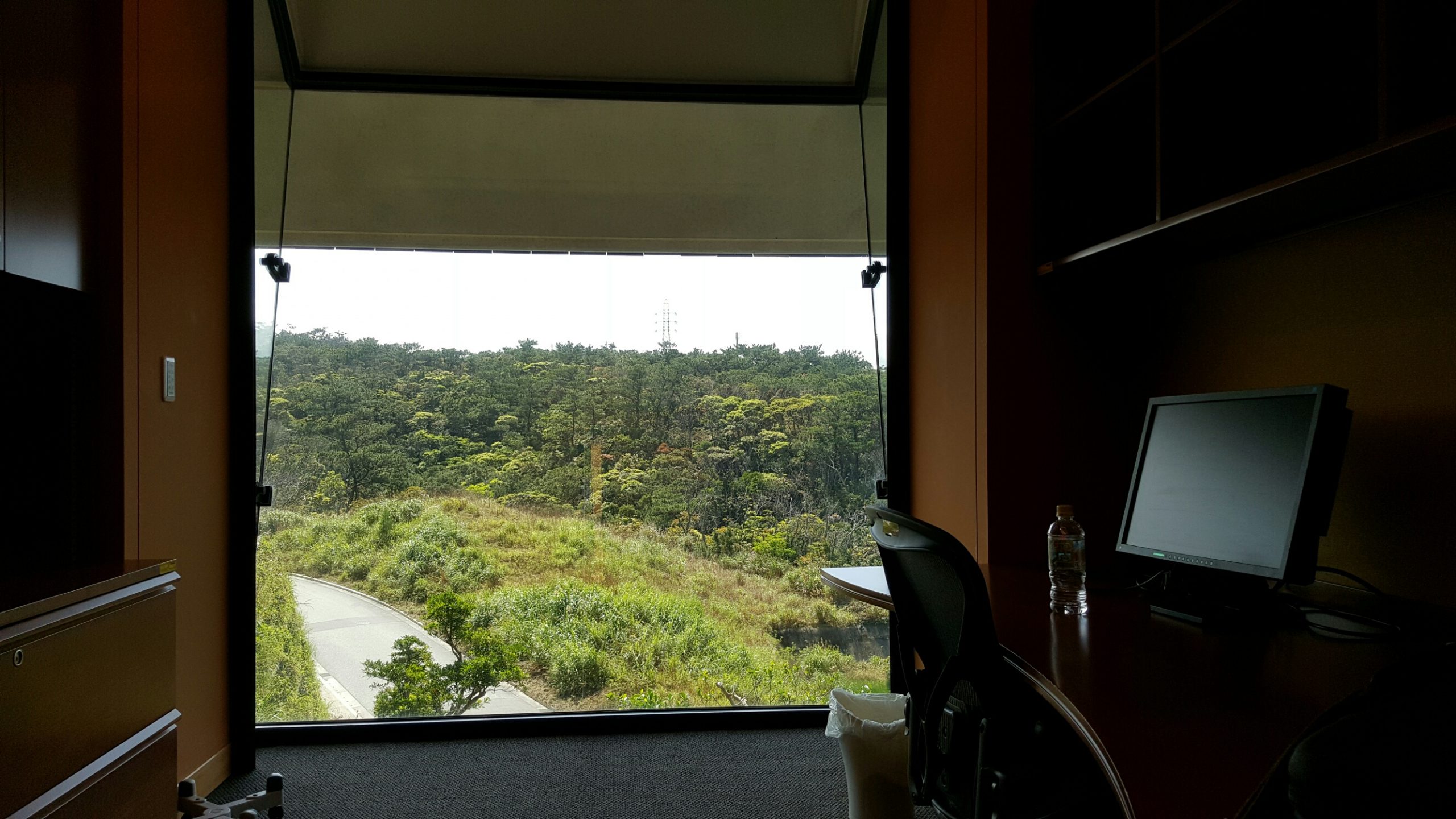During the week before spring break, I had the opportunity to visit the Okinawa Institute of Science and Technology (OIST) on a research collaboration. OIST is a graduate university in Japan that accepts only Ph.D. candidates in the sciences, and is located on Okinawa, a subtropical island in the East China Sea, a few hundred miles from Taiwan. While there, I worked with the Light-Matter Interactions Group, led by professor Síle Nic Chormaic (see https://groups.oist.jp/light for more information on this group, which has beed doing some exciting work on the optical manipulation of matter).
During my weeklong visit, I gave three lectures to the Light-Matter Interactions Group on stable vector modes of light propagating in optical fibers, and a research seminar entitled, “Polarization-based control of spin-orbit hybrid modes of light in biphoton interference,” which showcased some recent data taken my Wooster senior Maggie Lankford as a part of her senior independent study project.

Here is a photo of myself and this year’s Wooster physics T-shirt in front of the entrance to the institute, which consists of several very large buildings built on various areas of high elevation and connected across the ensuing ravines via skybridges.
I am particularly exited about this group’s work with optical nanofibers, and enjoyed interacting with the Ph.D. students and postdoctoral researchers working in this area. Optical nanofibers are standard optical fibers (with cylindrical glass cores a few microns in diameter) that have been heated over a small area and stretched, so that the fiber tapers to an hourglass shape in the heated region with a sub micron minimum diameter. Because light cannot be localized to a volume smaller than its wavelength scale, light propagating along inside the fiber leaks out in the hourglass region while still being guided by the fiber, which allows for light-matter interactions between object immediately outside the nanofiber. There are several exciting directions that this research may take, including the manipulation of single atoms by the nanofiber light modes (for a recent paper by this group describing some of these directions, click here)
I feel compelled to share the great view of subtropical island terrain from my office window


In a non-physics note, some members of the group kindly took me on an excursion to Okinawa’s aquarium, where they have a giant fish tank with two giant whale sharks, which are a very large species of fish:
Note the group of people standing just a couple of meters from a whale shark to get a feeling for scale. And, I take my earlier statement back– whale sharks are indeed a “physics note”, as Dr. Manz tells me that he uses this species as an example when teaching about wave propagation of skin patterns!
I look forward to continued collaboration with this research group, which dovetails nicely with my own interests in stably propagating modes of light in optical fibers.

